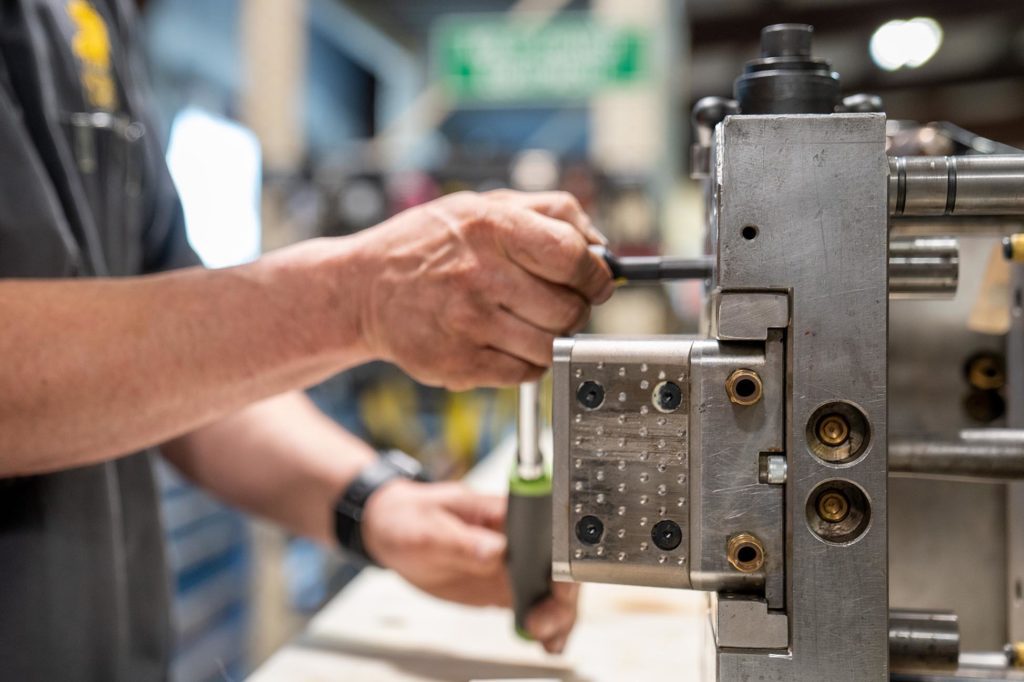The materials costs depend on whether your resin is a “commodity,” if your color is custom or “standard,” and packaging specifics.
Questions often asked about injection molding and automation. As always, we are here to answer any other questions you have through the contact form or directly by phone.
What are the smallest and biggest size products we make?
Noble can make parts as small as a few grams and a quarter of an inch up to 10+ pounds and 40+ inches.
How do you ensure quality standards are met?
Meeting customer quality standards starts with having them defined. Requirements should be more than just dimensions and tolerances, but should include appearance concerns, defined allowances for tool wear, packaging specifics, frequency of inspection, and all required documentation needs.
How do robotics become profitable?
Return on Investment calculations to support the use of robotics often consider only direct labor costs, but many more factors contribute to profitability for companies that employ automation. Reduced scrap or rework due to the repeatability of automation, reduced frequency of inspection required, less supervision required, increased uptime and throughput potential, and opportunities to combine manufacturing processes can all add to the profitability of a program.
What is EOL(End of Life) & NPI (New Part Introduction)?
Let’s start with NPI, the beginning of the process. It starts with an idea and then a review of whether can it be made, and how much does it cost to build? Prototype, test, re-prototype, finalize, test, package, and market and sell. That NPI. Then as time passes and the product can no longer be updated or parts go obsolete, then a decision is made to EOL (End of Life) the product. This needs a plan as well. When will we stop building it and how long will we support it? Do we need to put out a notification of EOL or post it on our website? Here where we build for other customers that is the customers’ decision and we are part of the process to stop production. How much material is left and when to stop buying supplies. There are processes and steps for every aspect of a product lifecycle.
What are ideal and minimum quantities for injection molding?
There is no universal rule for minimum quantities when considering injection molding. Generally, with tools costing at least $10,000 for the smallest and simplest parts, production volumes of a few dozen parts or even a few hundred parts can rarely carry a proportion of the capital cost of the molds. It is not uncommon for injection molds to cost between $50,000 and $500,000. In this range, it is expected that production volumes would be at 10,000 units and up.
Does Noble Plastics provide financing options?
Not directly. While there are several options for financing for OEM equipment, we are happy to work with the team at Equipment Finance Group! You can learn more about their offerings here!
What is the lead time?
Part design can take anywhere from 1 day to several weeks. Complex assemblies with tight tolerances can undergo several rounds of design, prototyping, and testing. Once a design is complete, tooling can take another 8-16 weeks. For simple or small parts, options exist to create low-run or modular tooling in as little as 2 weeks.
How can the manufacturing process of products be improved?
Products can be improved by monitoring quality data and making adjustments to process settings.
What things should be provided when coming to us with an idea?
To quote a part, we will request at least a part drawing with tolerances, material specifications, and number of units to produce. Preferably, we can be provided CAD/3D files, samples of parts, a material selection and alternative, quality specifications, and packaging specifications.

